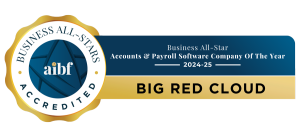Goals are important in all walks of life. They motivate us to work towards a better state. In business, goals can help drive the company forward. They may be outlined in your business plan as strategic objectives. For some companies, their mission statements can outline the overall goal that a company is working towards.
However, some goals are better than others. The SMART framework has been developed to make goals easier to achieve. By using this framework, achieving the goals you set for your business should become easier and more common, leading to increased success and growth.
So what is the SMART framework? Let’s take a look.
1. Specific
The first step to setting a SMART goal is to make sure that what you want to achieve is specific. When setting out what you want to achieve make sure that you answer the following questions.
- What exactly needs to be accomplished?
- Why does it need to be accomplished?
- Who is required in order to carry this out?
- Where will this be carried out?
- Which requirements or constraints exist?
By answering these questions we will have generated a specific goal to work towards. A general goal such as ‘grow the company’s sales‘ is less likely to be achieved than a specific one such as ‘grow the company’s sales by 10% before the end of this year‘ as it can be too ambiguous to actually motivate you to work towards it.
2. Measurable
How do you know you have achieved what you set out to do? You need to have concrete criteria to measure progress towards your goals. By setting these criteria you can monitor progress towards the end result that you want to obtain.
Measuring progress is supposed to help a team stay on track, reach its target dates and experience the exhilaration of achievement that spurs it on to continued effort required to reach the ultimate goal
3. Attainable
Setting goals that are realistic to achieve is important. It is an important motivational factor to set goals that are not out of reach so that team working towards them do not become disenfranchised with a lack of progress.
It is always better to achieve one more reasonable goal then to set multiple objectives that are out of reach. If you do feel that the results that you want are somewhat unattainable, perhaps you should make a list of ‘stepping-stone’ goals that are more reasonable. As you achieve these, you become closer to obtaining your overall objective.
4. Relevant
Good goals to have are one’s that are relevant to your business.
Make sure that the objectives you outline will contribute positively to your business. There is little point to working towards something that has no benefit to your business performance. In fact, it can be detrimental to put time and other resources towards such an endeavour.
5. Time frame
So you have identified what you want to do and how to measure it. So when are you going to start working towards the end result? How long will it take? It is important to outline a time frame to achieve your goal to ensure that you start to regularly to work and make progress towards the objective that you want to obtain.




